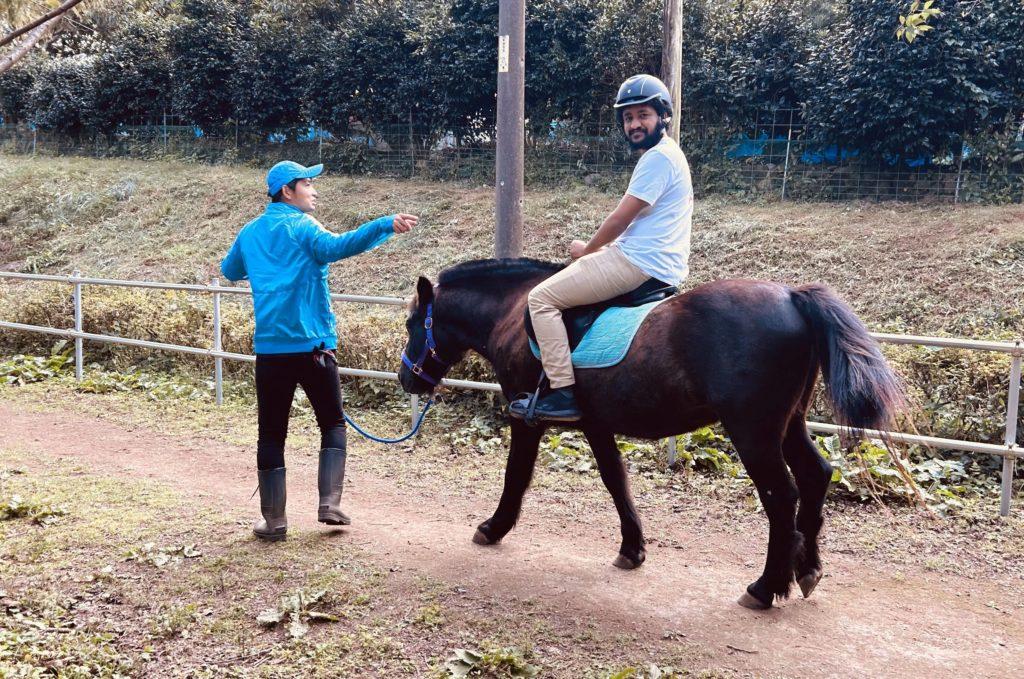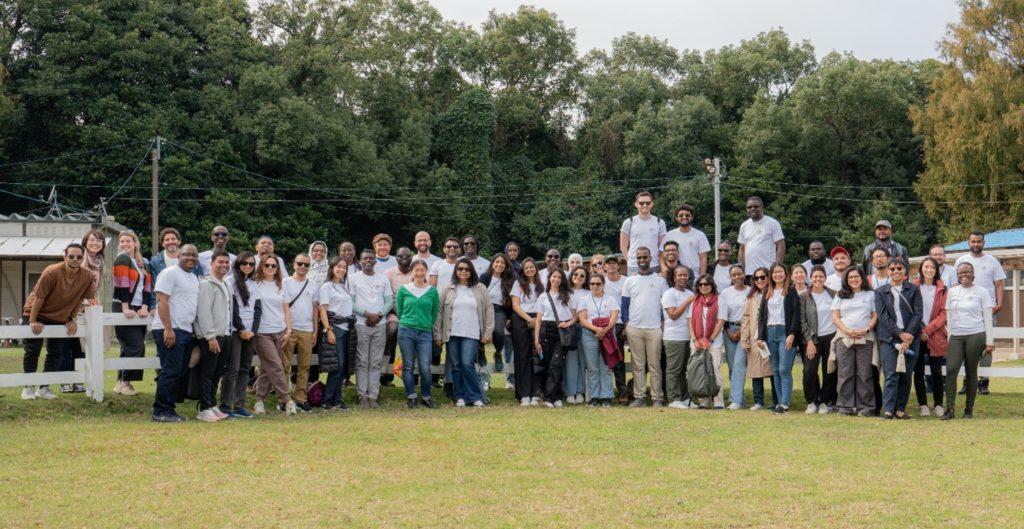Last week we participated in the 2024 Emerging Voices venture here in Nagasaki, Japan – respectively as an EV from the new cohort and as a facilitator. A visit to FARM UNZEN, a center for equine-assisted therapy in the Nagasaki prefecture, was the backdrop for this article. We were amazed by the innovative use of horses here in Japan. Back in sub-Saharan Africa, we use horses mainly for transportation and agriculture. Only rich people use them for sport or recreational purposes. Our visit to FARM UNZEN made it clear that different purposes are very much an option. We’ll focus on the role of horses in both human health and environmental protection, among others based on what the owner of the farm told us. We’ll also address some of the research gaps that still need to be tackled, in our opinion.

In this section, we highlight horses’ important role in promoting human health. Horses (like some other animals) contribute in various ways to physical, emotional, and psychological well-being. There’s horseback riding, of course (see the pictures!), which might lower BMI among others, but but we will also briefly discuss here equine-assisted therapy, hippotherapy, …… We also try to identify key research gaps in the existing studies. By examining these roles and limitations, we aim to provide a clearer understanding of how different horse therapies and interactions can be further developed to benefit human health and areas where more robust research is needed to strengthen the evidence base.
Equine-assisted therapies (EATs) are often applied to patients with different types of either mental or physical conditions. We came across a compelling study that highlights significant improvements in mindfulness among patients suffering from anxiety after participating in an EAT. Although the study did not utilize a control group, the findings suggest a noteworthy correlation between interaction with horses and enhanced emotional well-being. Mindfulness EAT could also be an effective therapeutic technique for treating PTSD and other anxiety symptoms. A scoping review also indicated that in addition to participants developing bonds with the horses and perceiving EAS as welcomed breaks from traditional treatment, they experienced increased self-efficacy, positive emotional affect, and substance use disorder treatment motivation.
Nevertheless, we reckon there is a need for a well-designed randomized controlled trial (RCT) to provide strong(er) evidence on the effectiveness of these therapies. Furthermore, it is essential to include children who have experienced abuse in such trials to assess how they might benefit from these therapeutic interventions.

Horseback riding has also been associated with a reduction in BMI, among others in a South-Korean study. A comparison of BMI between two groups of obese women, after an 8-week ‘intervention’, revealed that the horseback riding group experienced greater BMI reductions than the walking group, even if they both made progress. However, it is important to note that this study has limitations, including a small sample size and a short duration, which may affect the generalizability and long-term applicability of the findings.
Another study on obese children also showed successful outcomes, and it was reported that the equine activities were helpful. Furthermore, participants voiced a desire for more sessions, which suggested that this approach could provide a strong boost to child motivation. All in all, though, we think (far) more evidence is needed on linking horseback riding therapy to a reduction in BMI – in spite of the fact that horseback riding is a physical activity known to contribute to lower BMI and improved cardiovascular health.
Hippotherapy refers to the use of the movement of the horse as a treatment tool by physical therapists, occupational therapists,and speech-language therapists to address impairments, functional limitations, and disabilities in clients with neuromusculoskeletal dysfunction (such as cerebral palsy).
Due to an absence of reliable and precise measurement instruments, researchers often have to rely on their subjective judgment when conducting psychological evaluations (of the therapy). This reliance on personal interpretation can lead to inconsistencies and potential biases in the assessment process, ultimately affecting the validity and reliability of the research findings. So also in this area, more research would be welcome.
As became clear to us at the farm, horses also contribute to ‘environmental health’. At centres for equine therapy, horse manure is collected and used as natural fertilizer, promoting sustainable farming. Additionally, horses help enhance plant diversity by acting as natural fertilizers and dispersing plant seeds through their movements, further supporting ecological balance. These roles highlight the environmental benefits of horses beyond their therapeutic and agricultural uses. A report shows that horses support environmental health by producing up to 9.1 tons of manure annually, which can be used as natural fertilizer in sustainable farming. Additionally, they contribute to plant diversity by dispersing seeds and acting as natural fertilizers, benefiting ecological balance. Farmers highly value horse dung manure because composting it enhances the nutrient content of the compost pile, making it “supercharged.” This process improves soil fertility, promotes regeneration, and leads to higher-quality yields. Additionally, it helps preserve grasslands by maintaining healthy soil and supporting sustainable farming practices.
During our visit to the farm, we observed firsthand how horses contribute to maintaining soil fertility and supporting environmental sustainability, highlighting their broader ecological role.
All in all, our visit to the farm was very enlightening and broadened our horizon on the multiple roles horses can play for human health and environmental protection. And we got to ride a horse as well!
Nevertheless, although the numerous health benefits hinted at above are supported by existing research, we recommend further studies involving larger sample sizes, randomized controlled trials (RCTs) and longitudinal research. These studies should clarify the current literature’s uncertainties and ongoing debates, for example on the frequency of participation required to achieve measurable health benefits. As most research is from HICs, the role of horses in low-income countries certainly warrants further investigation, including from a One Health angle.
But as researchers, we can only be happy about the fact that ‘more research is needed’ !

2024 EV4GH Cohort visiting FARM UNZEN in Nagasaki, Japan
Well articulated article such writeups
are so prestigious keep going!!!